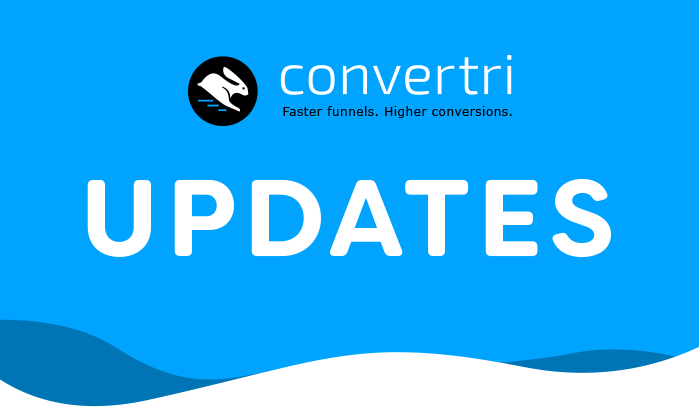5 Reasons Why Long Copy Converts
Long copy is best for complex or in-depth explanations, or when your audience isn’t all too familiar with your offering. Short copy, on the other hand, is good for when your audience is already familiar with the product or when you have a laser-focused value proposition you can get across in two seconds.
But even in some cases, long copy converts far better than short copy, even when you think the opposite might be true.
In a famous long vs short copy study, heat map tool Crazy Egg employed conversion experts to pinpoint why they weren’t getting as many sales as they’d like. The experts concluded that people were confused by their offering, didn’t know what heat maps were, what features were included, or what set them apart from free versions.
In short: their audience needed more information.
Crazy Egg responded by making their sales page longer – 20 times longer, in fact. The result? Sales went up 30%.

Later on, Crazy Egg would do another study where they shortened the copy on another page of their site, and boosted conversions by 13%. Which goes to show that longer copy isn’t better by default – it depends on where and how you use it.
If you’re asking which converts best, long copy or short copy, the truth of the matter is – it might surprise you. In this article, we’ll go over the five biggest reasons why increasing your word count might be the key to increasing your sales.
1. Long copy explains complex ideas
It’s much easier to describe a brand new product or service if you have more words at your disposal. Even though it’s unlikely you’re the first one in the world to ever do what you’re doing, the aforementioned study by Crazy Egg just goes to show that when it comes to information, more is sometimes better.
If you have a highly technical tool – such as website heat maps – which you’re promoting to an audience who may not be all too familiar with it, having thorough explanations on your sales page can help you win them over.
People won’t often take a gamble on products they don’t fully understand, especially when they aren’t convinced it will help solve their problem. By describing their problem and how your product fits as a solution, you’re effectively persuading them by squashing all of their objections.
2. Long copy qualifies interested prospects
One of the biggest complaints about long copy is… it’s long. It takes too damn long to read, and your customers would rather be doing something else. Everyone knows attention spans are getting shorter, right?
Except… they aren’t.
Netflix is a great example of this. It’s often said that television shortened our attention spans – but binge watching entire seasons of your favourite show in one sitting is kind of now de rigueur. We might mourn our middle-school ability to devour entire novels in a single snack-filled Sunday afternoon, but we forget that we’re now applying the same basic principle to Game of Thrones.
The key is being interested in what you’re watching or reading.

Any person who complains about the length of your copy probably isn’t even your ideal customer. It’s traditionally thought that with a long copy ad, readership will decline after the first 300 words – but the statistics show there isn’t another drop-off in readership until after 3,000 words. That’s a long-ish short story.
Why? If you’ve ever been fanatic about something, you’ll want to learn as much as possible. You may be happy to read a 75,000 word book about particle physics, for example, but feel your eyelids getting heavy after two pages on car maintenance.
So the people who may have filled out your 50-word landing page after 50 words may have downloaded your free lead magnet, but they would have been a poor prospect indeed for your $2,000 course.
3. Long copy builds trust and authority
When you invest the time it takes to create a long-form blog post that’s 10x better than what already exists on the topic, your audience will start to see you as an authority figure. The same goes for sales pages – unless you repeat yourself over and over (pro tip: don’t), adding more information will make you seem more of an expert.
Generally speaking, authority is all about how much your audience trusts you to educate them about a topic. It speaks to your experience and outlook. So, when you write a post titled “How to X,” you need to deliver on the promise, and do so better than every other tab they opened from the Google results.
If your audience clicks your link and only finds a 600-word overview of the problem, they won’t come away thinking that you’re an authority. They’ll just bounce off the page and look for content that can truly solve their problems, which truly promotes a trustworthy product as a solution.
Long-form sales pages give you the space to elaborate on the broader topic at hand, on your audience’s problem as well as benefits, features, fears and desires. You can create a mural rather than a sketch, and that sets apart the experts from the novices.
4. Long copy sells expensive products
As described above, long copy helps you become more of an authority figure – and nobody dropped a cool $2k on a course from a n00b.
Long copy helps you make more money, because getting good at it enables you to sell more expensive products. Typically, the sales process when buying a luxury car isn’t walk in, hand over cash, drive off. It’s a lengthy process involving consultation, customisation, forms and test drives. It’s lengthy. You can sink your teeth into it.

Often, buying luxury products isn’t about having the shiny object in your hand as fast as possible: it’s about the experience. And that starts the moment they see your ad, never mind after they click.
And when they do click, you want to persuade them that your product or service has history and finesse behind it – that it’s spent a long time in a developmental process, that it’s gone through many stages of production, you’ll want to explain the origins and meanings of all the composite materials, and so on. Long form copy enables you to tell your history and set the scene: two essential factors when selling luxury items.
5. Long copy performs better in search engine results
If organic SEO is a key part of your marketing strategy (and, quite frankly, it needs to be), long-form blog posts at least have to be part of the equation. A long-form page which also makes a sale? Even better.
Ever since Google put the kibosh to spammy, keyword-stuffing methods, study after study has shown that long-form content leads to higher SERP rankings.
Nowadays, Google’s algorithm rewards content that shows authority on a topic and engages readers. There’s two ways the search giant measures it:
- Time on page – one of the leading indicators of engagement, the time spent on the page is hugely important to your SERPs. The longer people spend on your page, the more likely Google will think your page is a Good Thing. When you write long-form copy, people take longer to read it – as long as it’s authoritative and engaging.
- Backlinks – backlinks play a crucial role in search rankings—especially when you’re vying for position on hyper-competitive terms. If a link to your site appears on other pages, Google will think it’s because you’re the bees-knees and the one-stop authority on the topic. Longer content is proven to gain more backlinks than short-form, so make sure your page is long-form and evergreen.
In conclusion, long copy is almost always better at selling a new product to an unfamiliar audience, or when you need to build a lot of trust or authority. However, long copy can also appeal to everyone who’s as obsessed with the topic as you are – provided your copy is engaging and avoids repetition.
Do you use long copy in your sales pages? If not – why not? Don’t forget to A/B test, and let us know how you get on in the comments!





